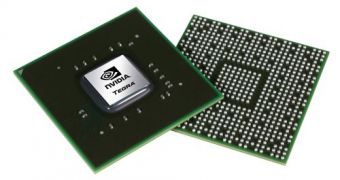The news about NVIDIA acquiring a maker of baseband processors was quick in sparking rumors about a more complete mobile SoC, but it looks like nothing of the sort is going to happen, at least at first.
Those keeping track of things on the IT market will know about how companies get bought off by bigger ones more or less all the time.
Recently, it was NVIDIA that performed such an acquisition, or announced it would, the other company being known as Icera.
Icera is a maker of baseband processors, chips used in order to give devices the ability to communicate with 2G, 3G and 4G wireless networks.
As soon as the announcement was made, those that heard of this, naturally, assumed the Santa Clara, California-based GPU maker would start work on a more integrated hardware solution immediately.
Turns out, however, that the company will take things more slowly, starting out by bundling Icera chips with its Tegra SoC devices.
This is in tune with the original purpose of the platform, which was to power high-end products not reliant on high-integration levels.
In fact, tablets and powerful tablets don't have the application and baseband capabilities on the same chip.
Of course, as time goes by, the Tegra, or some other platform, will have to start addressing the large number of mobile devices more focused on affordability, so integrating baseband chips, eventually, is definitely not an impossibility.
"The vast majority of the projects that we are working on, whether [these are] tablets or super phones, the ability to keep the two processors separate allows us to mix and match the best processors for the devices that we are in,” said Jen-Hsun Huang, chief executive officer of Nvidia, during the quarterly conference call with financial analysts.
“If you look at most of the super phones in the world today and most of the tablets in the world today, the application processor and the baseband processors are, in fact, separate.”
“We surely have that capability [to integrate application and baseband processor into the same piece of silicon]. We will look at the market and look at when the technology makes sense to integrate to offer either the smallest footprint or the lowest cost. ”

 14 DAY TRIAL //
14 DAY TRIAL //